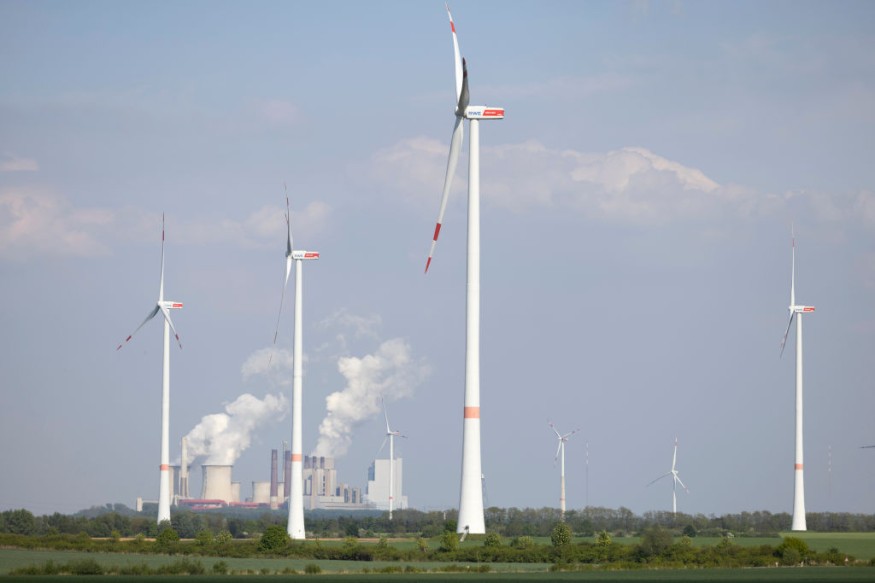Environmentalists are concerned about a new danger to biodiversity: renewable energy. Cleaner energy sources are critical in the fight against climate change, but some scientists argue that more should be done to preserve pristine desert environments.
Rising Trend

If it hadn't grown in lithium-rich soil, a little Nevada wildflower known as Tiehm's buckwheat could have remained unknown. As it is, this might be its undoing.
However, Tiehm's buckwheat is more uncommon than lithium. It only grows on about 10 acres of land in Rhyolite Ridge in southern Nevada, also the site of one of the new lithium mines.
"One individual on a bulldozer might wipe it out in a day," says Patrick Donnelly, the Center for Biological Diversity's Great Basin Director and one of the flower's strongest supporters.
He and other environmentalists regard the flower and the mine as symptomatic of a larger and troubling trend: attempts to solve two environmental crises-a fast-rising climate on the one hand and an incredible surge in extinction on the other-are increasingly at odds; they argue.
Impacts of Renewable Energy
The renewable energy revolution impacts landscapes across the country, not only in the desert. Solar and wind-powered energy output in the United States has doubled in the last decade. Experts believe that's only the beginning of what we need to do to transition away from fossil fuels and prevent the worst effects of climate change. Nevada wants to acquire 50% of its electricity from renewable sources by 2030, under the Biden Administration's objective of totally decarbonizing the economy by 2050.
According to some campaigners, the upshot is a renewable energy land rush that threatens endangered species and pristine desert habitats.
Environmental Detriment

Wetlands and grasslands have long been considered worthless, with swamps being drained for building and prairies being plowed to cultivate crops. Some conservationists believe that history is repeating in the desert's mainly undeveloped valleys, rich in sunlight, lithium-rich soils, and geothermal hot spots.
Donnelly claims he hasn't seen a thorough list of all the species threatened by renewable energy development. He does, however, retain an informal list of patients in Nevada. The US considers several of them to be endangered. Others, such as the Fish and Wildlife Service (FWS), aren't-or aren't yet. They are frequently unfamiliar.
Tiehm's buckwheat, Tecopa bird's beak (an annual plant), Railroad Valley springfish, Railroad Valley toad, Kings River pyrg (a small snail), and Ash Meadows women tresses are all threatened by lithium mining, according to Donnelly (an orchid).
Desert tortoise, three-cornered milkvetch, and white-margined beardtongue are all threatened by solar energy (a flower).
Dixie Valley toad, Dixie Valley pyrg, Long Valley speckled dace (a tiny fish), Steamboat buckwheat, Fish Lake Valley tui chub (another small fish), and bleached sandhill skipper are among the geothermal-energy-dependent species (a butterfly).
"There is virtually little information about these species in many cases-they are all quite uncommon and cryptic," adds Donnelly. "However, Nevada is facing a possible renewable energy extinction problem, and these little organisms and plants are in the forefront."
While ecosystems have constantly been threatened by livestock grazing and gold mining activities, he claims that renewable energy growth is the most recent and expanding concern.
The United States controls little under half of the land in 11 Western states, including 80 percent of Nevada's territory, controlled mainly by the Bureau of Land Management (BLM). The BLM designated 17 sites in six western states as BLM Solar Energy Zones in 2012, citing them as the best places to build a solar facility. Nevada has five locations.
Actions
According to Lee Walston, an ecologist for the US Forest Service, the BLM ignored essential species' habitats while identifying the locations. Argonne National Laboratory is part of the Department of Energy. BLM experts worked with Argonne scientists to map their solar energy zones and develop environmental impact statements.
Some businesses, however, request permissions outside of these zones. "There are a variety of motivations for uses outside of solar energy zones," says Heidi Hartmann, an energy policy expert at Argonne who works with Walston. She cites the closeness of power lines or roadways as a reason for applying for a permit outside of a zone.
The BLM stated in an email that they grant permits per the National Environmental Protection Act (NEPA), which requires public and environmental organizations to submit comments during open comment periods.
Related Article : Experts are Saying that Renewable Sources are Not Enough to Solve Europe's Energy Crisis
For more environmental news, don't forget to follow Nature World News!
© 2025 NatureWorldNews.com All rights reserved. Do not reproduce without permission.





